Sun 25 Mar 2007
BNSF autorack loading yard in Point Richmond, California
Posted by Daniel Swearingen under Modeling Ideas , Railroads[3] comments / Leave a comment
I try to go for a walk every day at lunch and I usually climb this big hill behind the office where I work. From the top of this hill I can look down on a mini-yard which is dedicated to loading and unloading auto racks with automobiles imported from Asia and other parts of the US.
This whole area of Point Richmond used to be Sante Fe trackage. BNSF now handles the moves in and out of this yard. I’m not sure if BNSF owns the yard or if it is owned by an import agency of some kind. However, the office buildings seem to have BNSF logos so this all may be owned by the railroad.
As I can see it, cars are unloaded from ships docked at piers about a half mile south of this yard (out of sight to the right in the photos) and held for a short time in a large secure parking lot. They are then driven to this yard and either loaded onto auto carrier cars or onto trucks.
In addition, some cars arrive by rail from other parts of the US to this yard and are unloaded and then loaded onto trucks for more local delivery. Lots of traffic in and out. The cars move by being driven on their own wheels on/off ships, on/off the rail cars, and on/off trucks. There is an office where the teams of drivers work from and a bunch of vans to return drivers from their short trips between the various areas of the yard.
Here’s a Google Earth satellite shot of the yard.
Link to a Google Earth KMZ file to this location
I made this sketch to show schematically how the yard is laid out.
Main rail entry is gauarded by a hefty bar gate, cyclone fence gate and a small watchtower. A yard full of new cars is pretty valuable!
There’s a RIP track (Repair In Place) along the east side of the yard (the far side in these photos) where you can often find auto carriers jacked up getting minor repairs. There are several small tool sheds and a rack of welding gas and supplies nearby to support this. There are also lots of spare wheelsets of various diameters nearby.
Note that these photos were all taken from over 2000 feet away so there are heat ripple distortions in all the close-ups taken with extreme telephoto.
Mobile ramps are used to load/unload the cars from the auto carriers.
Lots of trucks coming and going.
Switchers — usually this single beat-up GP35 (I’m wrong — I’m not a diesel guy and I learned that this is a GP9) still wearing Santa Fe colors comes in and shifts cars daily. There are some REALLY sharp curves in and out of this yard, something like 300 foot radius which is sharp for these huge cars. Anyway, there have been several occasions where this single switcher is not enough to pull out a long loaded string and the crew has had to either split the string and double the move or go borrow another unit to yank it out.
These moves foul all the streets nearby so I need to plan my exit from work or you can easily be stuck 20 minutes waiting for the switcher to finish its work.
Note all the little work trucks.
The graffiti work on the cars can get pretty intense.
Various office structures around the edge of the yard. I think this one is the main driver’s office with vans to carry workers to and from their driving assignments. Note the BNSF logo on the office.

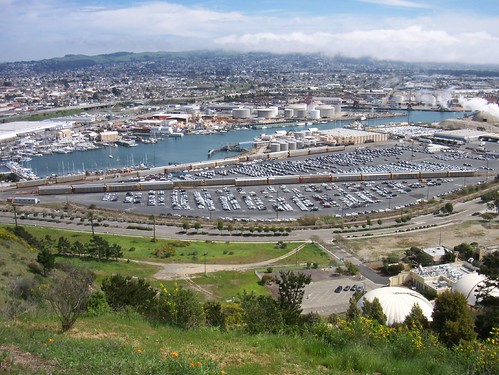

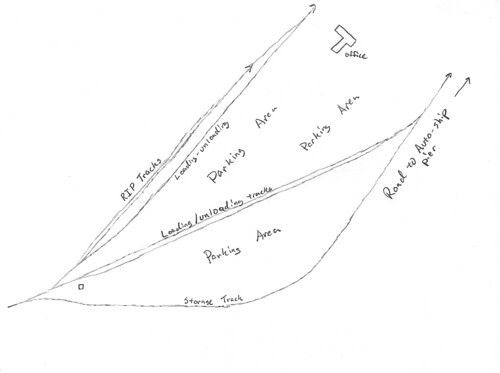


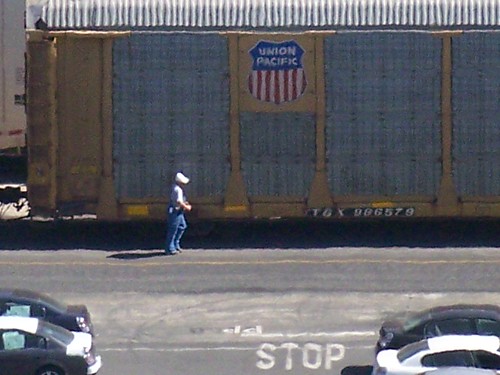
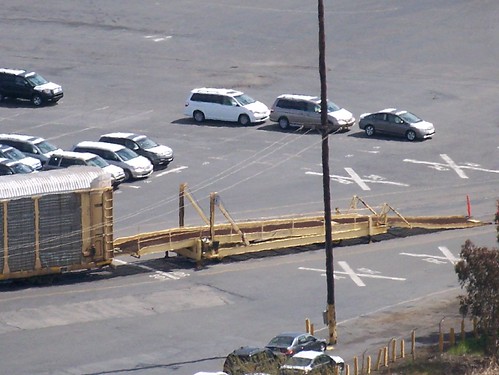
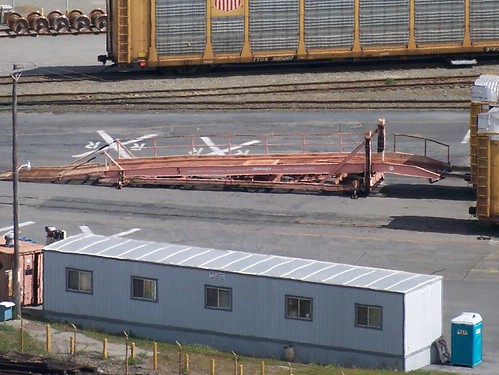

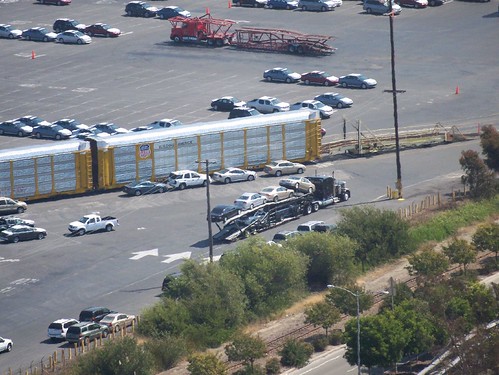
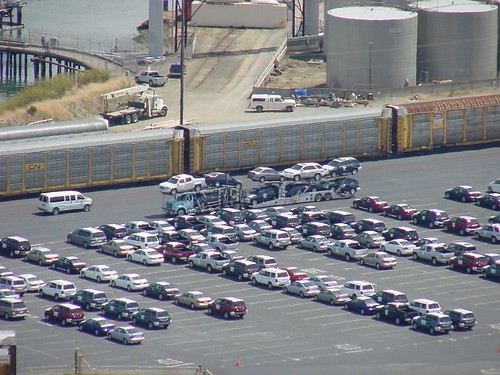
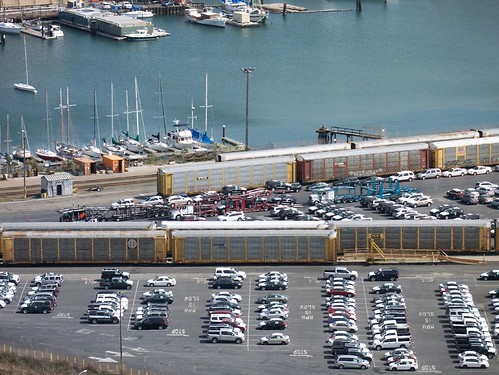

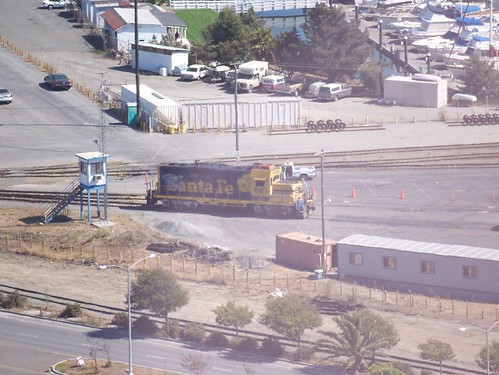


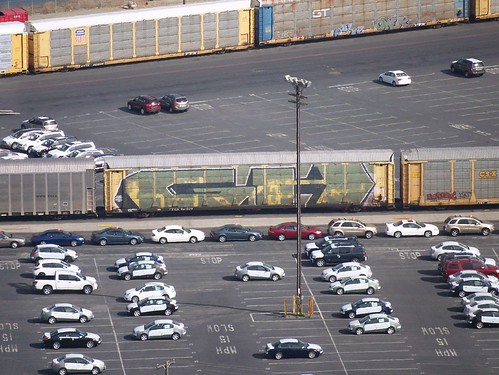

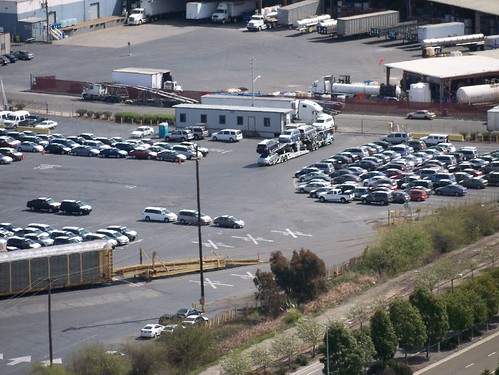
March 25th, 2007 at 7:47 pm
I really liked your post on the autorack facility. It would make a great module. I put a link to this post on my own blog (http://ten87.blogspot.com/) Take care… Ed
March 26th, 2007 at 5:41 am
Thanks Ed,
I see that autoracks are a really popular topic at TrainBoard so it gave me the idea to post the pictures.
Dan
June 19th, 2009 at 10:59 pm
Hello my name is Allan Martinez,
I worked at this yard for about a year and a half, unloading and loading these rail cars. I came across your page and it surprised me how nice it looks from up there.. you did a great job by describing what goes on down there..